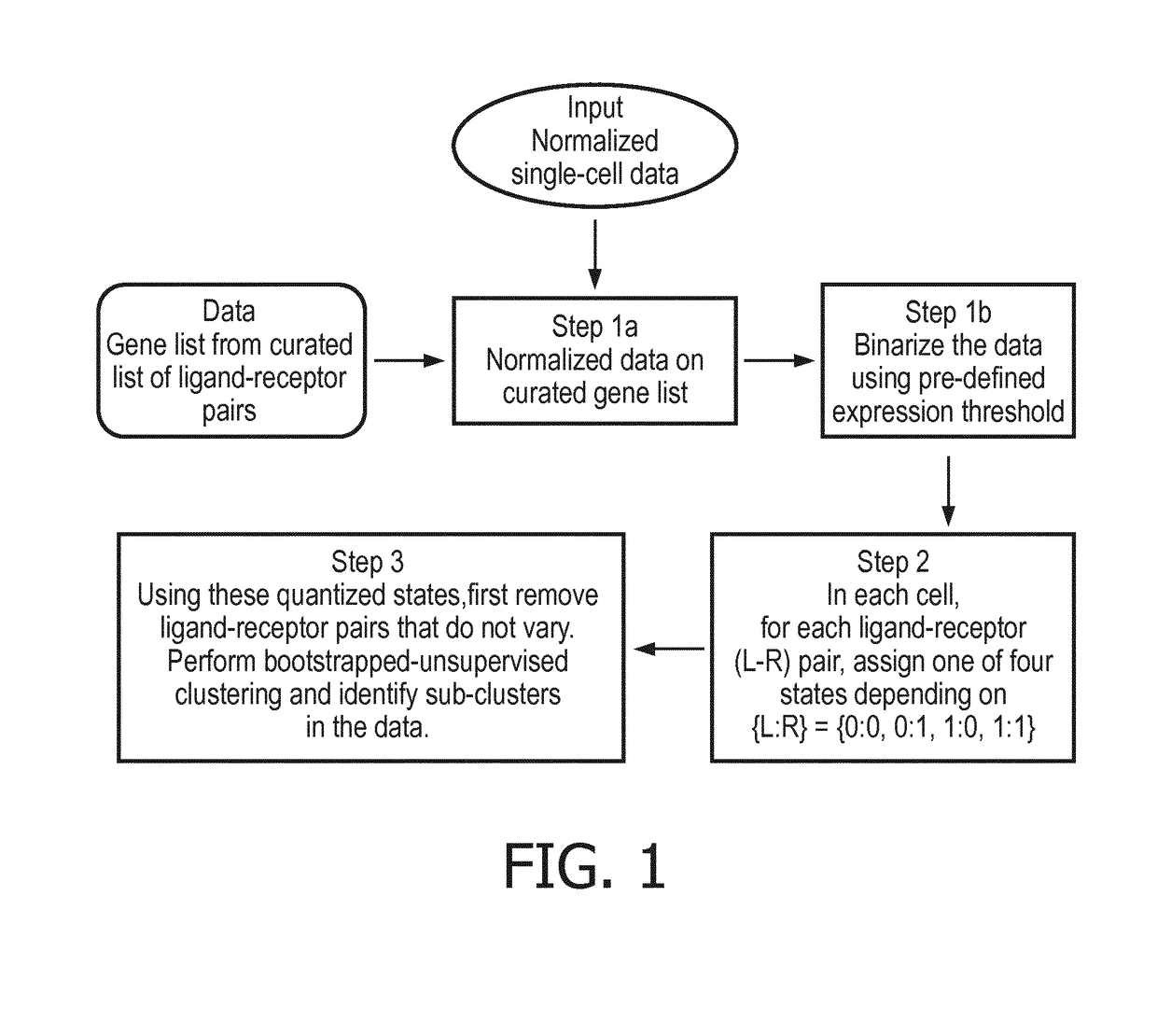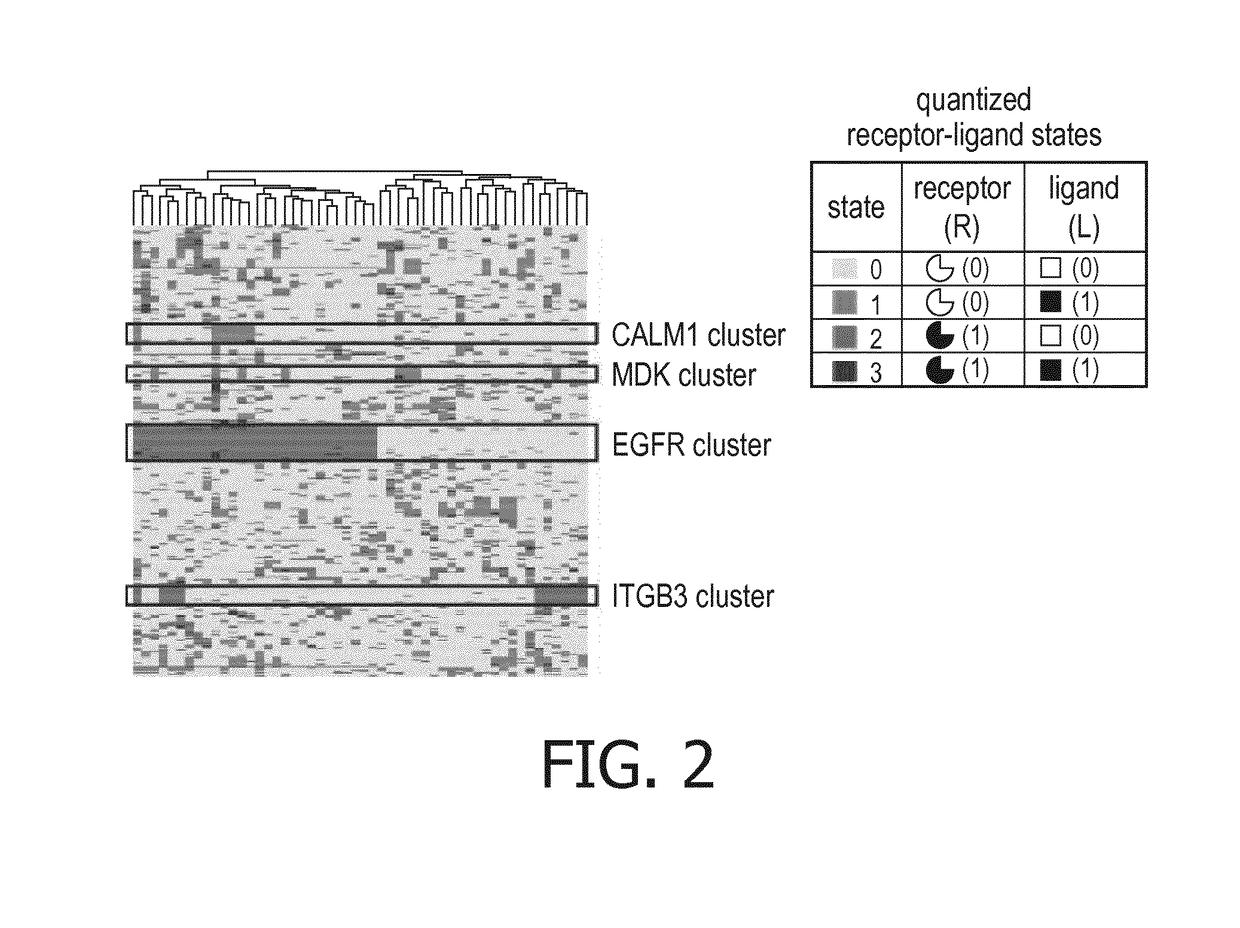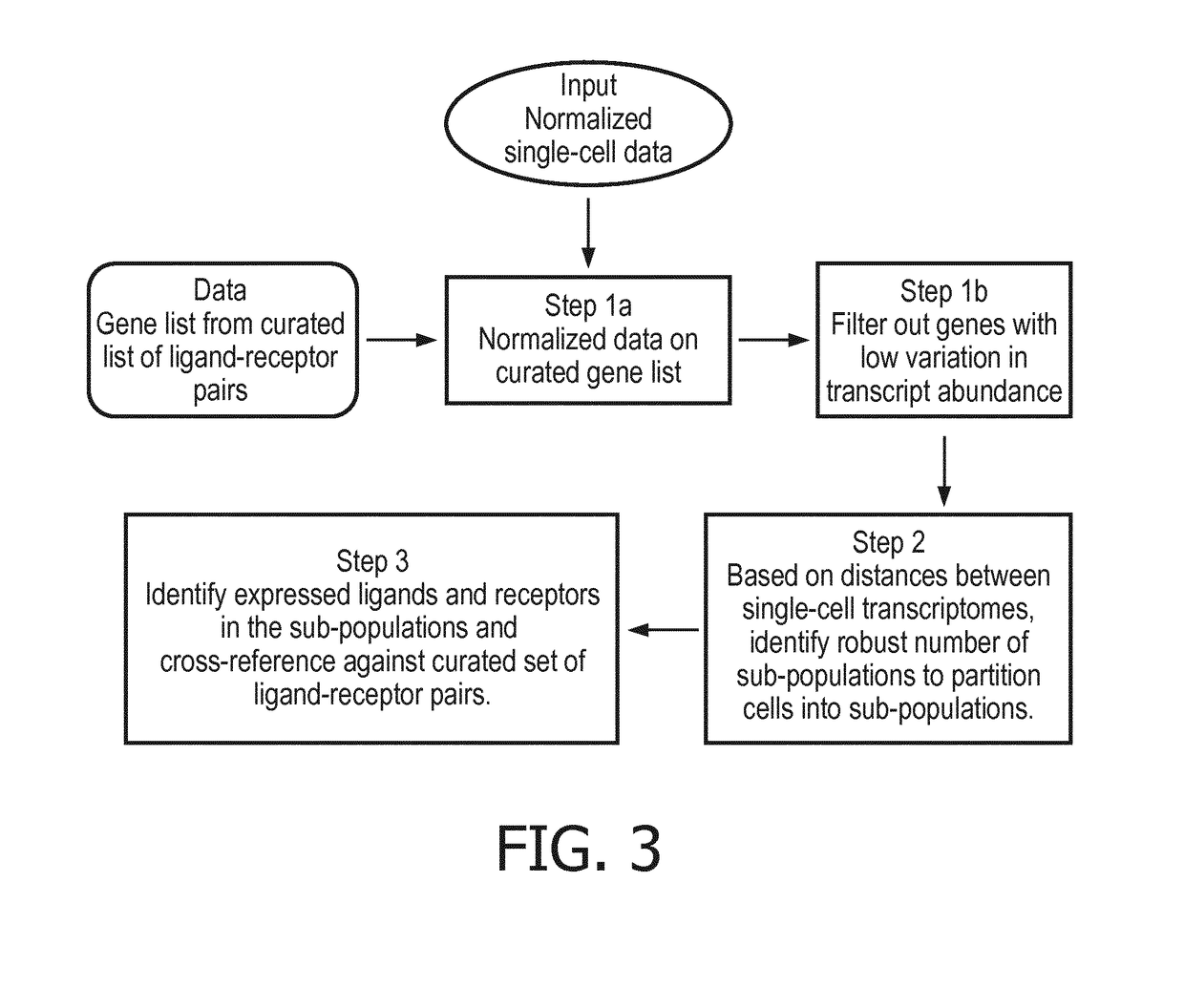Sub-population detection and quantization of receptor-ligand states for characterizing inter-cellular communication and intratumoral heterogeneity
a sub-population and receptor technology, applied in the field of sub-population detection and receptorligand states, can solve the problems of impeded the design, development and effective use of targeted therapies in clinical settings, metastatic disease, and difficulty in achieving effective therapy planning
- Summary
- Abstract
- Description
- Claims
- Application Information
AI Technical Summary
Benefits of technology
Problems solved by technology
Method used
Image
Examples
Embodiment Construction
[0050]The present invention provides a system and methods for quantization of receptor-ligand states to identify components of intercellular communication and a method for sub-population detection and identification of likely receptor-ligands that orchestrate intercellular communication between sub-populations. The present invention is described in further detail below with reference made to FIGS. 1-5.
[0051]According to an embodiment of the present invention, a first process of quantization of receptor-ligand states to identify components of intercellular communication is set forth by the steps outlined in FIG. 1. Initially, single-cell RNA-seq data is generated from NGS hardware that may be employed in a hospital, service laboratory or other diagnostic facility. Typically, the NGS hardware contains computer memory and processing capabilities. Alternatively, single-cell RNA-seq data obtained from alternate sources, such as published literature, may be used. The first step, gene sele...
PUM
| Property | Measurement | Unit |
|---|---|---|
| heterogeneous | aaaaa | aaaaa |
| heterogeneity | aaaaa | aaaaa |
| molecular composition | aaaaa | aaaaa |
Abstract
Description
Claims
Application Information
 Login to View More
Login to View More - R&D
- Intellectual Property
- Life Sciences
- Materials
- Tech Scout
- Unparalleled Data Quality
- Higher Quality Content
- 60% Fewer Hallucinations
Browse by: Latest US Patents, China's latest patents, Technical Efficacy Thesaurus, Application Domain, Technology Topic, Popular Technical Reports.
© 2025 PatSnap. All rights reserved.Legal|Privacy policy|Modern Slavery Act Transparency Statement|Sitemap|About US| Contact US: help@patsnap.com



